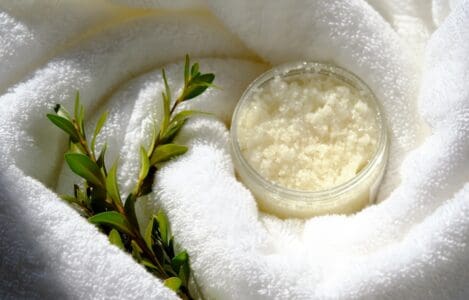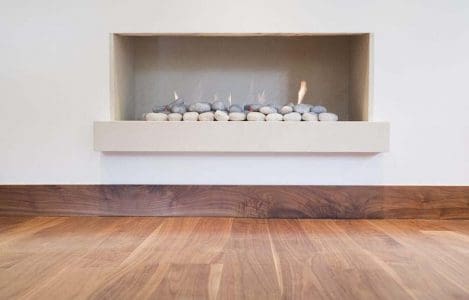As temperatures plummet across the UK and snow and ice blankets cover many parts of the country, one common household problem is likely to rear its head: condensation. While it may seem like a mere inconvenience, condensation can lead to more serious issues if left unchecked, such as dampness and mould. These problems not only damage your walls and furnishings but also pose health risks to your family. In this article, we will explore effective strategies to prevent condensation in your home and ensure a healthy living environment.
Understanding the Causes of Condensation
Condensation occurs when moist air comes into contact with a colder surface, leading to the formation of water droplets.
This phenomenon is prevalent in many homes, particularly during colder seasons from October to March. Understanding the underlying causes of condensation can help you take appropriate preventive measures.
Here are some key factors that contribute to condensation:
1. High Humidity Levels: Excessive moisture in the air is a primary driver of condensation. Everyday activities such as cooking, showering, and drying clothes indoors release moisture into the environment. Without proper ventilation or moisture control, the humidity levels in your home can rise, increasing the likelihood of condensation on surfaces.
2. Poor Ventilation: Insufficient airflow and ventilation exacerbate condensation problems. When moist air lingers in enclosed spaces, it has limited opportunities to escape. This trapped moisture then condenses on cold surfaces like walls, windows, and mirrors. Inadequate ventilation can occur in areas without proper extraction systems or when windows and doors are kept shut for extended periods.
3. Temperature Differences: Temperature differentials between the air and surfaces play a significant role in condensation. Cold surfaces, such as poorly insulated windows or exterior walls, can cause the air nearby to cool rapidly. When warm, moisture-laden air comes into contact with these colder surfaces, it cools down and releases its moisture in the form of condensation.
4. Insufficient Insulation: Inadequate insulation allows heat to escape from your home, leading to cooler internal surfaces. Cold walls and windows provide ideal conditions for condensation to occur. Homes with outdated or insufficient insulation are more prone to condensation issues compared to well-insulated properties.
Preventing Condensation in Your Home
Now that we have explored the causes of condensation, let’s delve into effective preventive measures to combat this issue and maintain a condensation-free home environment.
1. Control Humidity Levels
Managing indoor humidity levels is crucial in preventing condensation. Here’s how you can control moisture in your home:
- Utilise extractor fans in kitchens and bathrooms to remove excess moisture during cooking, showering, and bathing.
- Open windows or doors periodically to promote natural ventilation and allow fresh air to circulate.
- Avoid drying clothes indoors, especially in unventilated areas. Opt for outdoor drying or well-ventilated spaces like utility rooms or balconies.
- Be proactive in wiping away any visible condensation to prevent water accumulation.
2. Improve Ventilation to prevent condensation
Proper ventilation is essential for reducing moisture buildup and preventing condensation. Consider the following measures:
- Install extractor fans in kitchens, bathrooms, and utility rooms to enhance airflow and expel moist air outside.
- Ensure air vents and airbricks are unobstructed to allow for the free flow of air throughout your home.
- Keep internal doors open to promote air circulation between rooms.
3. Insulate Your Home
Effective insulation helps maintain consistent temperatures throughout your home, reducing the risk of condensation. Take these insulation measures into account:
- Insulate walls, roofs, and floors to minimize heat loss and maintain warmer surfaces.
- Consider cavity wall insulation, which creates a barrier to prevent cold spots and reduce the likelihood of condensation on interior walls.
- Upgrade to double-glazed or triple-glazed windows to improve insulation and reduce surface temperature differences.
4. Manage Temperature
Maintaining a consistent temperature in your home can help prevent condensation. Here are some tips:
- Ensure your heating system is well-maintained and provides sufficient warmth to all areas of your home.
- Avoid drastic temperature fluctuations, as rapid changes can contribute to condensation.
- Keep internal doors open to allow heat to distribute evenly throughout your home.
By implementing these preventive measures, you can significantly reduce condensation and create a healthier and more comfortable living environment.
Final thoughts on preventing condensation in your home
Condensation can be a persistent issue in many homes, leading to dampness, mould growth, and potential health hazards. By understanding the causes of condensation and taking proactive steps to prevent it, you can protect your home and ensure the well-being of your family. So, embrace these tips and bid farewell to condensation woes in your home.

We’re offering £100 off for all new bathroom and kitchen installations booked before 31st July 2025.
Just book your free quote and we’ll go through everything with you when we visit – no pressure, just Amazing Service, Amazing Quality and Amazing Prices.




